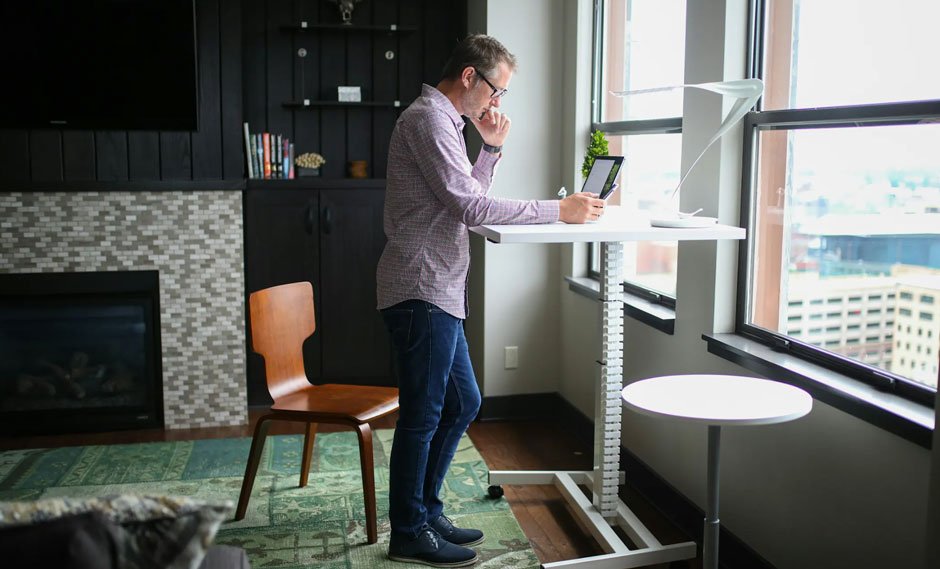
Let’s face it: most of us don’t think too hard about our desk time. It comes with the job. But what a lot of people don’t realize is all that time in your chair, time after time, could be working against your joint health without you even knowing.
You don’t have to be actively lifting boxes or running marathons to develop joint issues. Sometimes just staying still for prolonged periods of time is enough to create stiffness, soreness and even long-term damage. The good news? You can do something about it – without quitting your job or completely changing your life around.
The Slow Damage of Sitting Still
Your joints are built to move. When they remain still for too long–especially when ergonomics aren’t considered–things start to go sideways. Muscles start to tighten, blood circulation slows down, and cartilage not only loses its lubrication, but effectively just dries out.
Eventually, you may find discomfort in your lower back, hips, neck, and sometimes your knees. Unlike acute injuries, which occur suddenly, these effects are more gradual and can be cumulative. Many people will not even realize how it is affecting them until it is disabling your daily routine.
Early Signs You Might Be Overlooking
One of the challenging aspects of experiencing joint-related pain from inactivity is how stagnant those early signs can be. Perhaps your knees feel a little stiff the first time you stand up at work, or you can feel your back tighten and stiffness set in at the end of the day. It’s not just the signs of you getting older—it’s your body letting you know that it needs more movement!
Interestingly, one of the most erased symptoms of inactivity is not even experienced throughout the workday, but in the morning to start the day off! Foot pain that is a bit odd or sharp is a common symptom that people experience first thing in the morning when getting out of bed. Morning foot pain can actually be a red flag that your joints—specifically the soft tissue structures surrounding those joints—are not being taken care of as needed, and it is not just your feet, but how the body reacts through inactivity.
Why Micro-Movements Matter
The solution is not really that complicated. You don’t need to go to the gym five days a week, or begin half marathon training; what your joints want is steady, low-impact movement throughout your day.
Even small changes can get circulation going and minimize stiffness, such as standing up every 30-60 minutes; stretching your arms over head; or just standing up and taking a couple steps while on a call. These “micro-movements” mobilize synovial fluid around your joints, which is the lubrication that keeps your joints running smoothly and pain-free.
And yes, “frequency is important, not intensity.”. An afternoon of frequent small movements will do more for your joints than sitting down for 8 hours and then getting up to do a big workout.
What to Do When Discomfort Already Exists
Even with the best intentions, many of us already deal with some joint discomfort by the time we start thinking about prevention. Whether it’s tension in the neck from staring at a screen or sore knees after sitting too long, the key is finding manageable ways to ease those symptoms during the day.
One helpful strategy is to address the discomfort where it starts. For example, localized pain in the hands, shoulders, or lower back often responds well to gentle stretching, better posture, or the application of topical pain relief products. These kinds of solutions don’t interrupt your workflow or demand a huge lifestyle shift, but they can offer noticeable relief when used as part of a balanced approach to joint care.
Building a Joint-Friendly Desk Routine
Protecting your joints does not mean you need to change your workspace overnight. It is really about making small and thoughtful changes to help minimize stress on the body. Here are some easy ways to keep yourself moving:
- Adjust your chair: Your feet must be flat on the floor, and your knees should be level with, or slightly below, your hips.
- Check your monitor height: The top of your screen should be at, or just below, eye level, so that you do not have to strain your neck.
- Support your lower back: If your chair does not provide for a lower back, use a small lumbar pillow or rolled towel.
- Keep your wrists neutral: Your keyboard and mouse should be planned out so your hands are level (not bent up, or down) when using them.
- If your feet do not touch the floor comfortably, use a footrest.
- You should be moving at least every hour: Set a reminder to stand up, stretch, and take a few steps around your space.
None of the above examples require a large budget but, over time, they could help reduce the wear and tear on your joints.
Final Thoughts: Small Habits, Big Impact
Your desk job doesn’t have to destroy your joints. The real peril is stillness—ignoring those first indicators of discomfort and succumbing to habits that may come to create chronic pain or limitations on motion.
Being cognizant of how your body feels, incorporating some movement into your day, and creating a more ergonomic workspace can prolong the life of your joints and keep you moving for a very long time. Sometimes it’s the small changes that make the big difference.









